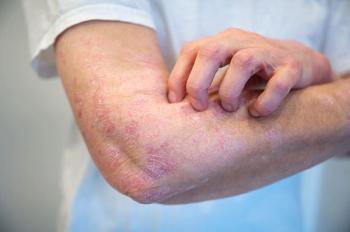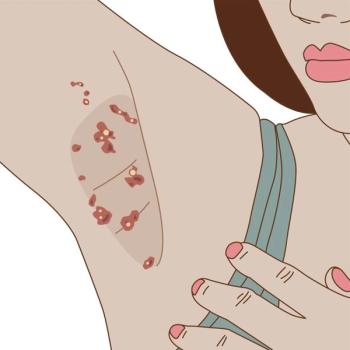
Reaction to Chickenpox Vaccine
Two weeks after the subcutaneous injection of 0.5 mL of varicella vaccine in a 2-year-old girl's left arm, a nonpruritic rash developed on the child's upper abdomen and left forearm. She had no fever. The lesions subsided after 5 days.
Two weeks after the subcutaneous injection of 0.5 mL of varicella vaccine in a 2-year-old girl's left arm, a nonpruritic rash developed on the child's upper abdomen and left forearm. She had no fever. The lesions subsided after 5 days.
Drs Alexander K. C. Leung and Justine H. S. Fong of Calgary, Alberta, write that the varicella vaccine Varivax is a cell-free preparation of the Oka strain of live, attenuated varicella virus. It is serially propagated and attenuated in human embryonic lung fibroblasts, guinea pig embryonic cells, and human diploid cell cultures.
Following chickenpox vaccination, a rash develops at the injection site in approximately 3.4% of children; a generalized eruption occurs in about 3.8% of vaccinated youngsters. The lesions may be macular, papular, vesicular, or pustular and can mimic the appearance of an insect bite. Typically, between 250 and 500 lesions arise from the chickenpox infection; whereas between 2 and 5 lesions erupt from a reaction to the chickenpox vaccination.1
Patients with the postvaccination reaction must avoid contact with immunocompromised persons, pregnant women, and neonates for the duration of the rash. If association with high-risk persons is unavoidable, weigh the possible risk of vaccine virus transmission against the risk of acquiring and transmitting natural varicella virus.
REFERENCE: 1. Leung AK, Kao CP. The truth about chickenpox. Can J Diagn. 1999;16(12):79-87.
Newsletter
Enhance your clinical practice with the Patient Care newsletter, offering the latest evidence-based guidelines, diagnostic insights, and treatment strategies for primary care physicians.






























































































































































































































































































































